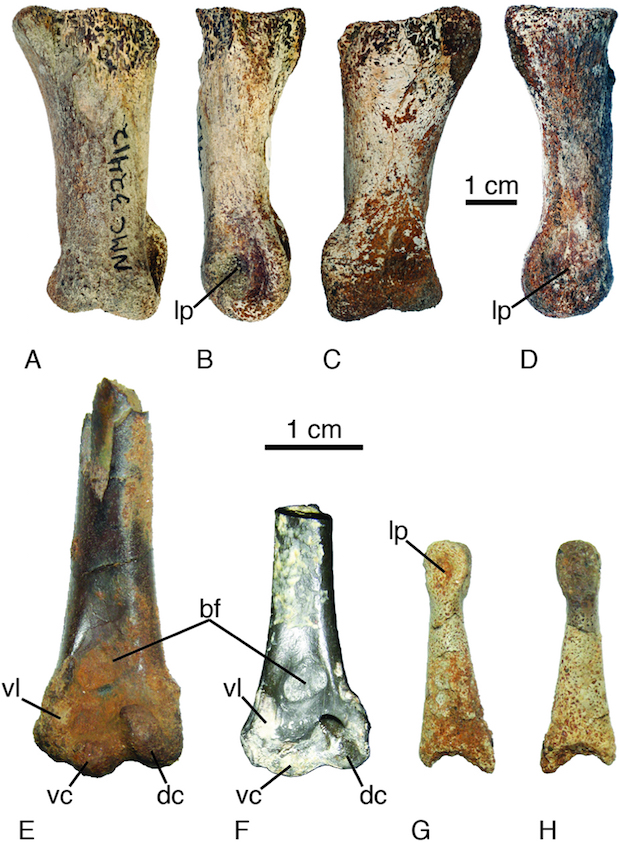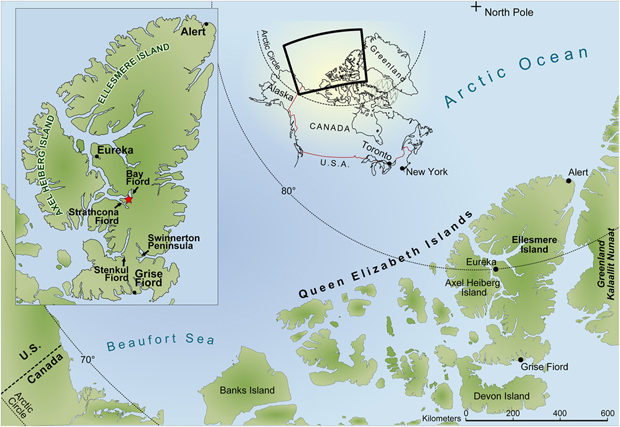Giant, vegan bird once roamed the Arctic
During the Eocene Epoch, some 53 million years ago, Ellesmere Island in the high Arctic resembled cyprus swamplands and was home to prehistoric turtles, alligators and other animals, according to fossil evidence.
Now new research confirms that a 6-foot tall flightless bird that weighed several hundred pounds and had a head the size of a horse's spent its winters there, too.
Researchers from the Chinese Academy of Sciences in Beijing and the University of Colorado-Boulder examined and described the first and only fossil evidence from the Arctic of an enormous bird known as Gastornis, in a study published in Scientific Reports.
Scientists reported that a toe bone, which was found in the 1970s, is nearly identical to fossil toe bones from the same bird discovered in Wyoming, and date to the same time period. Gastornis fossils have also been found in Europe and Asia.
"We knew there were a few bird fossils from up there, but we also knew they were extremely rare," study co-author Jaelyn Eberle, an associate professor in geological sciences at CU-Boulder who conducts research on fossil mammals, reptiles and fishes, said in a press release. Eberle also noted that another scientist reported seeing a fossil footprint on Ellesmere, although its specific location remains unknown.
Recent research on Gastornis also indicates that the bird was vegan and used its gigantic beak to break apart foliage, fruit, seeds and nuts.
The paper by Eberle and first author, Prof. Thomas Stidham of the Chinese Academy of Sciences in Beijing, also described a second Ellesmere Island bird from the early Eocene, called Presbyornis.
Presbyornis was similar to today's duck, goose and swan family, but with long legs like a flamingo. The evidence comes from a humerus, or upper wing bone, collected by the same paleontology team that found the Gastornis bone in the 1970s. The team included Mary Dawson, Robert "Mac" West, Howard Hutchinson and Malcolm McKenna.
Stidham compared casts of Presbyornis bones excavated in ancient Wyoming to the bone from Ellesmere Island, including all of the marks for muscle attachments. "I couldn't tell the Wyoming specimens from the Ellesmere specimen, even though it was found roughly 4,000 kilometers (2,500 miles) to the north," he said in a press release.
Scientists still don't know whether Presbyornis lived on Ellesmere Island year-round. Eberle noted that although there was a rich diversity of plants and animals on Ellesmere in the early Eocene, winters were dark and cold. "Since Ellesmere Island is high above the Arctic Circle, the lights still went out there for several months of the year, just as they do today," Eberle said.
Today, some sea ducks spend the winter on Ellesmere Island, which is one of the coldest, driest places on the planet, with temperatures dropping to minus 40 degrees Fahrenheit in winter.
Researchers say the findings about these ancient species may help us to understand how a warming climate is changing the Arctic.
"Permanent Arctic ice, which has been around for millennia, is on track to disappear," Eberle said. "I'm not suggesting there will be a return of alligators and giant tortoises to Ellesmere Island any time soon. But what we know about past warm intervals in the Arctic can give us a much better idea about what to expect in terms of changing plant and animal populations there in the future."

